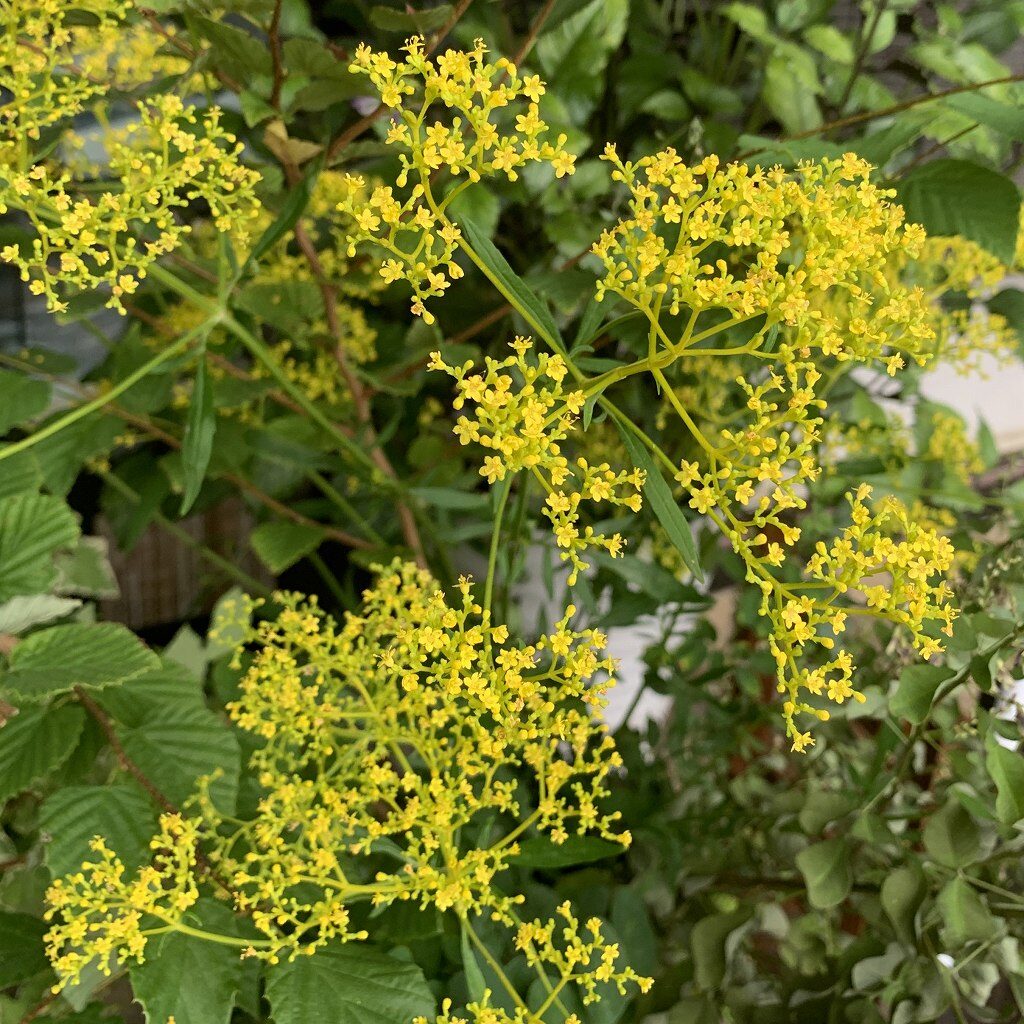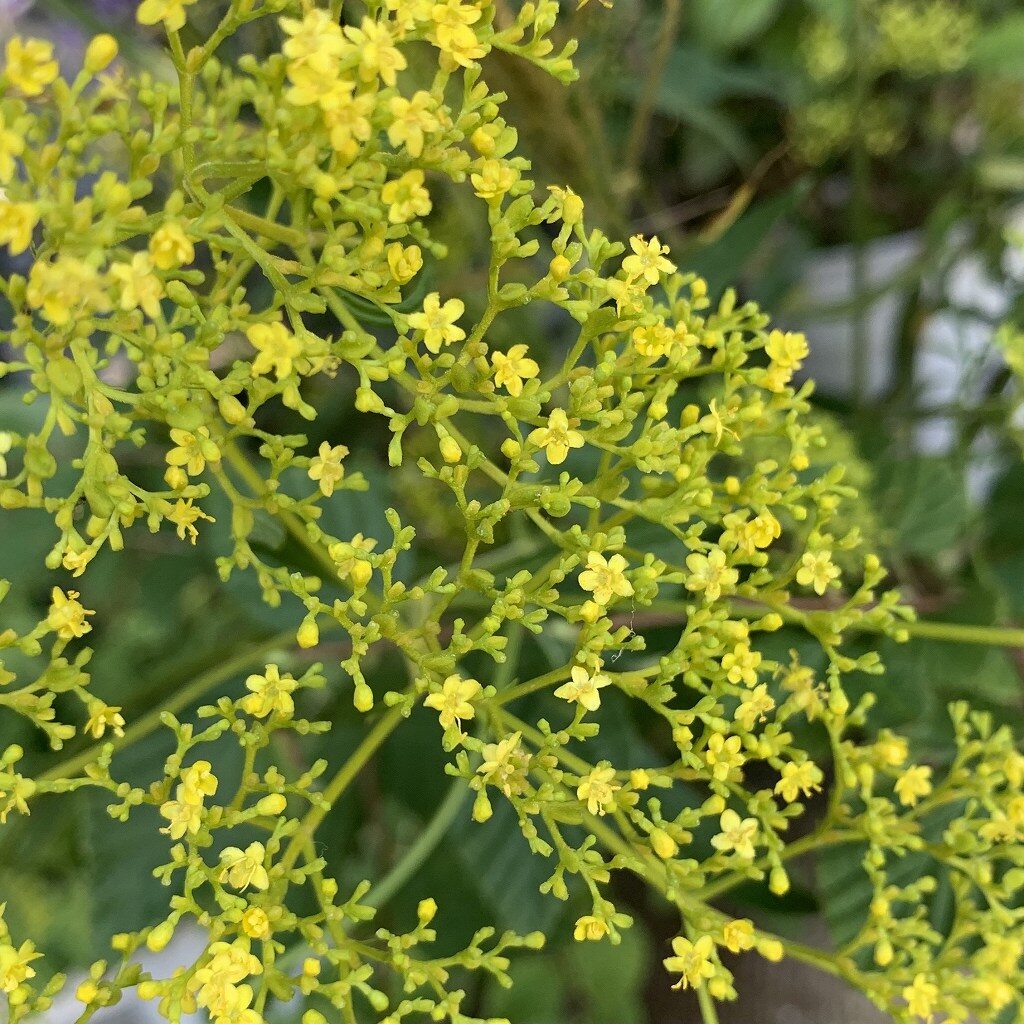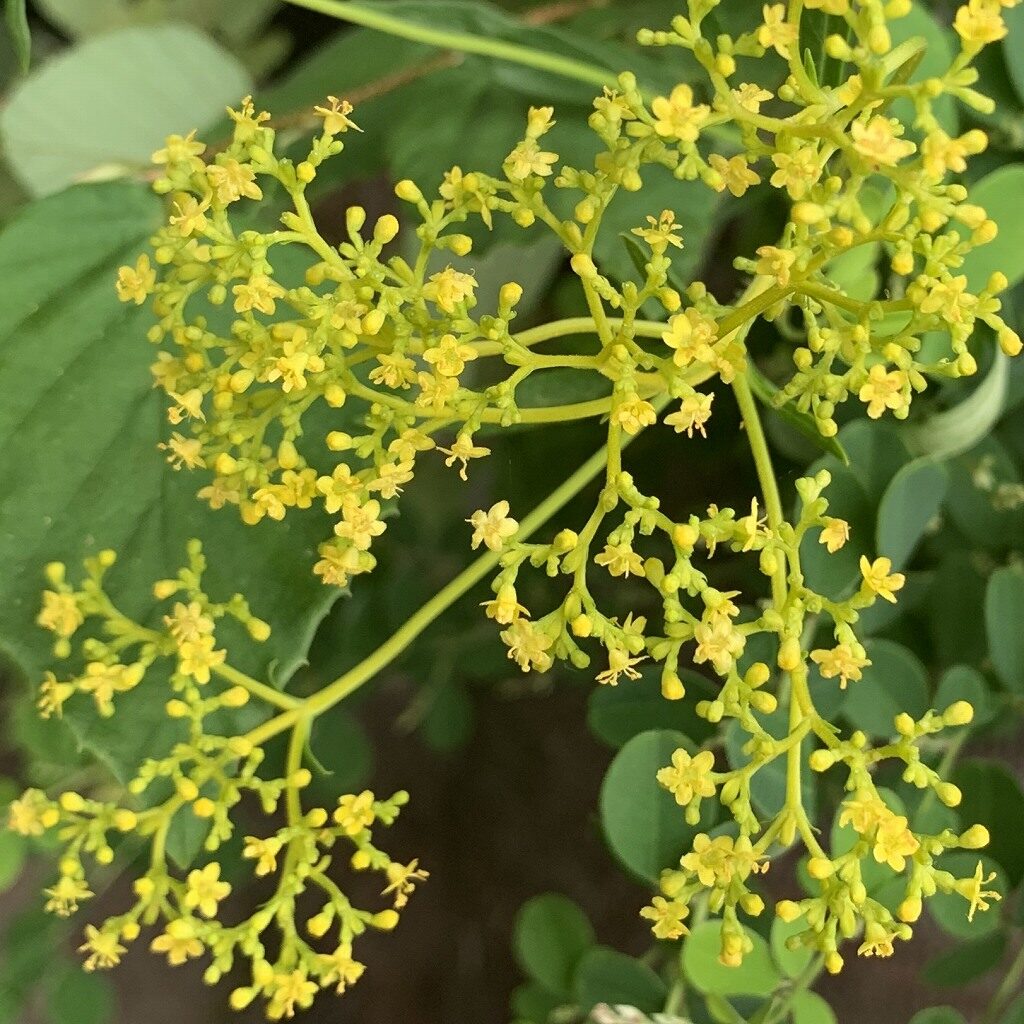オミナエシは「女性を圧倒するくらい美しい花」という意味。古くから親しまれ、秋の七草の1つですが、実際には夏から花が咲き始めます。
The Japanese name for Golden Lace is “a beautiful flower that overwhelms women.” They have been popular with Japanese people for a long time, and although they are one of the “seven herbs of autumn” in Japan, they actually begin to bloom in the summer.
【仮名】オミナエシ
【和名】女郎花
【英名】Golden Lace
【学名】Patrinia scabiosifolia
【誕生】08/ 16, 09/ 05, 09/ 19, 10/ 06, 10/ 09
【開花】07, 08, 09, 10月
【花色】Yellow



オミナエシ
オミナエシの来歴
オミナエシはスイカズラ科の多年草です。原産地は東アジアで、日本では北海道から九州まで、国外ではシベリア東部から中国、朝鮮半島まで分布。日当たりのよい山野に群生し、古くから親しまれてきました。奈良時代に編纂された『万葉集』で、山上憶良が詠んだ秋の七草の1つ。
オミナエシの名前
オミナエシの名前は「おみな」が女、「えし」が圧で、「女性を圧倒するくらい美しい花」という意味。また、花の様子が黄色の粒々で粟飯に似ていたからともいわれます。上代では米飯を「おとこめし」、粟飯を「おみなめし」と俗称。実際「粟花」「女飯」という別名もあります。
オミナエシの姿形
オミナエシは、よく分枝した茎の先端に黄色の小花を多数つけます。花は筒形で先端が丸く5裂。お彼岸のお供えや、お月見のお飾りに用いられるため、「盆花」「思い草」という別名もあります。花言葉も「約束を守る」。秋の七草の1つですが、実際には夏から花が咲き始めます。
オミナエシの近縁
オミナエシの近縁「男郎花」は同じオミナエシ属の多年草です。名前の由来は女郎花より力強く見えるから。姿形は似ているものの、全体が大きく粗い毛が生え、花が乳白色で葉の幅が広く、地表に匍匐枝を長く伸ばして株を殖やします。稀に両者の雑種「男女郎花」が生じることも。
オミナエシの利用
オミナエシは切り花で水を替えないと異臭を発します。屋外で刈り倒したまま片付けないと異臭が発生。そのため「敗醤」という別名があります。一方、全草や根を天日干しし、煎じて飲めば利尿、解毒、消炎に効果があるとも。漢方では「敗醤草」「敗醤根」という生薬になります。
Golden Lace
Golden Lace is a perennial plant of the Valerianaceae family. The place of origin is East Asia, and in Japan it is distributed from Hokkaido to Kyushu, and overseas from eastern Siberia to China and the Korean Peninsula. They grow in colonies in sunny mountains and have been loved since ancient times. They are one of the seven autumn herbs written by Okura Yamanoue in the Manyoshu compiled in the Nara period.
The Japanese name of golden lace comes from the Japanese word for “beautiful flower that overwhelms women”. Or it is said becaouse the flowers resemble yellow grains of millet rice. In ancient times, rice was commonly called “man rice” and millet rice was commonly called “woman rice”. The Japanese pronunciation of woman rice was similar to the Japanese pronunciation of Golden Lace. Actually, They are still also known as “millet flower” and “woman rice”.
Golden Lace has many yellow florets at the tips of well-branched stems. The flowers are tubular and 5-lobed with rounded tips. Since they are used as an offering for autumnal equinox and as a decoration for viewing the moon, they are also known as “flower to welcome the deceased” or “reminiscence herb”. The language of flowers is also “keep promises”. Although they are one of the seven autumn herbs, they actually begin to bloom in the summer.
Patrinia villosa, whose Japanese name is “man flower” is a perennial of the same genus as Golden lace, whose Japanese name is “woman flower”. The origin of the Japanese name is because they look more powerful than Golden Lace. Although they have a similar shape, they have large, coarse hairs, milky-white flowers, and wide leaves. In rare cases, hybrids of both, “Man and woman flower” may also occur.
If you don’t change the water with cut flowers of Golden Lace, you will get a foul odor. If you do not clean up while cutting down outdoors, a bad smell will occur. Therefore, there is another name called “rotten sauce”. On the other hand, it is said that if the whole plant and roots are dried in the sun and drink it as a tea, it is effective for diuresis, detoxification, and anti-inflammatory. In Chinese medicine, they become a herbal medicine called “rotten sauce herb” and “rotten sauce root”.


